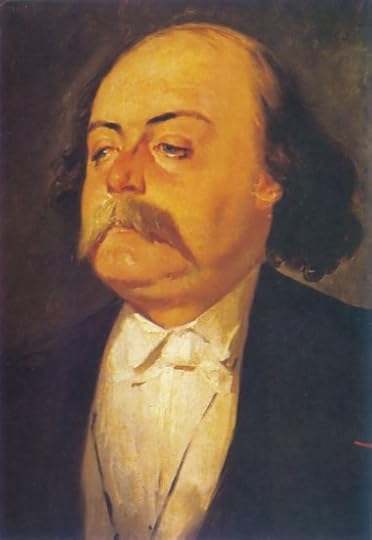The joy of style
![[I took this photo somewhere in the British Isles, summer 2012.]](https://i.gr-assets.com/images/S/compressed.photo.goodreads.com/hostedimages/1467353713i/19582135._SY540_.jpg)
[I took this photo somewhere in the British Isles, summer 2012. @richardgilbert]
How Fiction Works unveils narrative craft—including memoir’s.
Review continued of How Fiction Works by James Wood. Picador, 248 pp.
Part 2. James Wood’s 2nd principle concerns prose built upon details
[I]n life as in literature, we navigate via the stars of detail. We use detail to focus, to fix an impression, to recall. We snag on it.—How Fiction Works

[Gustave Flaubert, portrait by Eugène Giraud]
If free indirect style (close third-person narration) epitomizes the novel’s history, according to James Wood in How Fiction Works, so does what he calls “the rise of detail.” Details allow us to “enter a character” but refuse to explain him, giving readers the pleasure of mystery and of co-creation. Wood credits French novelist Gustave Flaubert (1821–1880) with uniting details, stylishness, and close third-person narration to launch the realist novel that has persisted. The modern novel “all begins with him,” says Wood. Its hallmark is an approach that stamps its prose:We hardly remark of good prose that it favors the telling and brilliant detail; that it privileges a high degree of visual noticing; that it maintains an unsentimental composure and knows how to withdraw, like a good valet, from superfluous commentary; that it judges good and bad neutrally; that it seeks out the truth, even at the cost of repelling us; and that the author’s fingerprints on all this are, paradoxically, traceable but not visible. You can find some of this in Defoe or Austen or Balzac, but not all of it until Flaubert.
Style begins with what the writer notices—or notices on behalf of her characters—and uses for calculated effect. And yet, in its particulars and overall effect, narrative art retains mystery. A pleasure of How Fiction Works for me was Wood’s joyous riff on one of Virginia Woolf’s lines from The Waves:
The day waves yellow with all its crops.
“I am consumed by this sentence,” Wood admits, “partly because I cannot explain why it moves me so much.” While Woolf’s diction and syntax are simple here, her brilliance resides in having the day wave instead of the crops, he says, and “the effect is suddenly that the day itself, the very fabric and temporality of the day, seems saturated in yellow.” But how can a day wave yellow? That’s the thing, Wood notes: yellowness has taken over even our verbs, has “conquered our agency.”
How style and narrative point of view fuse

[James Wood explains the novel]
So according to How Fiction Works, fiction works via point of view (see my first post) and style built on details. That’s it? Pretty much, yes, that broad point and all its subtlety, according to Wood’s little red book. Including of course how perspective and style are inextricably bound. This occurs because the novelist is always working with at least three languages, Wood says:There is the author’s own language, style, perceptual equipment, and so on; there is the character’s presumed language, style, perceptual equipment, and so on; and there is what we would call the language of the world—the language that fiction inherits before it gets to turn it into novelistic style, the language of daily speech, of newspapers, of offices, of advertising, of the blogosphere and text messaging.
Contemporary novelists especially feel this pressure of tripleness, Wood says, because the language of the world has so thoroughly “invaded our subjectivity, our intimacy . . .” The tension just between a novelist and her point-of-view character is constant. (Of course characters are built of details, and they notice details that further reveal their “minds.”) How challenging to render layers of perspective, perhaps explaining novelists’ delightfully pungent essays where they can just be themselves.
Take David Foster Wallace, so talented and exuberant a stylist, who in order to do his fictive job well became a master, in Wood’s view, of “the whole of boredom.” Novelists, perhaps especially including Wallace, often dominate their characters—“write over” them, in Wood’s phrase. But to shirk the world’s dross entirely, to fail to get one’s hands dirty in another consciousness, risks imaginative failure: “the cold breath of an alienation over the text.”
There’s not much on structure in How Fiction Works, giving an odd relief from that obsession. With his steady focus on point of view and style, Wood illuminates fiction, and implicitly memoir, in its deepest core principles and finest subtleties. Such criticism enhances appreciation of narrative artistry for readers and practitioners alike.
[Part 1 of this review dealt with Wood’s consideration of point of view.]
The post The joy of style appeared first on Richard Gilbert.



